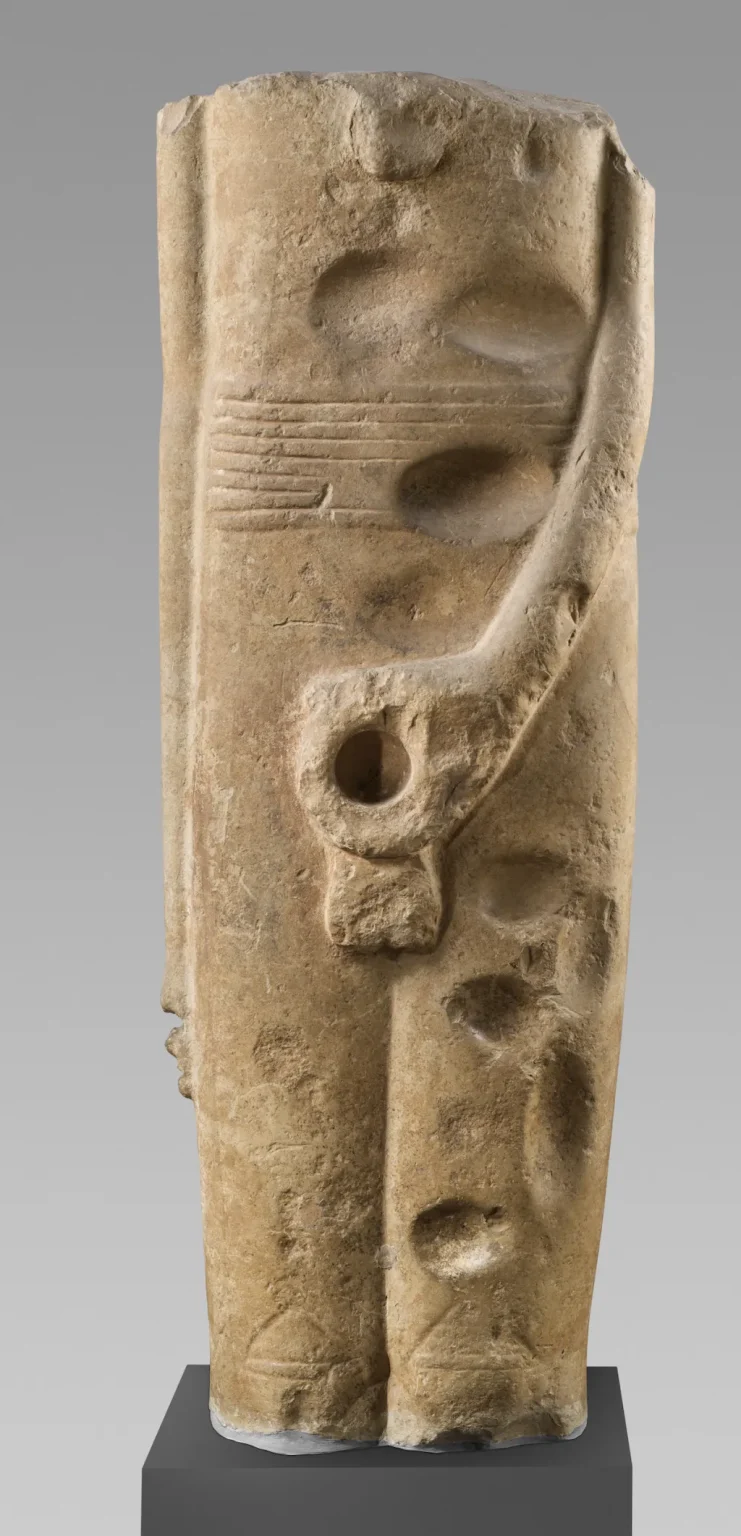A statue carved more than 5,000 years ago and now featured in “Divine Egypt” at the Metropolitan Museum of Art has become the subject of internet mockery after a viral post on X. A user named “microplastics dedicator” shared an image of the sculpture, writing, “If you walked into the Egyptian city of Qift in 3300 BCE, you would have immediately encountered a 13-foot statue of a guy cranking his hog.”
As described in the exhibition’s audio guide, the statue depicts the god Min with his hand at his groin, where an erect phallus once was. Brendan Hainline, a research associate at the Met, explains in the guide: “Min’s standard iconography is that he has an erect phallus that he is holding with one hand.” The narrator adds, “Here, the phallus is missing. It would have been made from a separate piece of stone that’s been lost.”
The guide continues: “As you might guess from his pose, Min was strongly connected to male fertility. And he came to be associated with the fertility of the land as well. … The circular divots you see on this statue were probably created after it was no longer standing, as Ancient Egyptians rubbed or ground the surface to collect its dust—viewed as containing some of the statue’s power—for ritual use.”
Wall text in the Met exhibition notes that Min’s standard representation—with feathers on his head, a threshing tool, and an erect phallus—remained consistent for 3,000 years, from the Second Dynasty of Ancient Egypt into the Roman period. Unlike other renderings in which Min is shrouded, the Colossal Statue of Min, one of five representations of the god on view, is “nude except for an archaic belt wrapped around his waist.”
“Divine Egypt” at the Met is on view through January 19, bringing together nearly 250 artworks and objects related to representations of Egyptian deities, including notable loans from the Louvre, the Ny Carlsberg Glyptotek in Copenhagen, and the Museum of Fine Arts, Boston. In a rave review, ARTnews’s Alex Greenberger noted that the show “contains quite a lot that defies easy explanation.”
